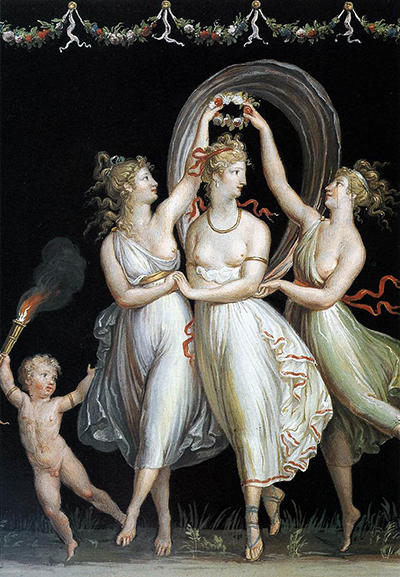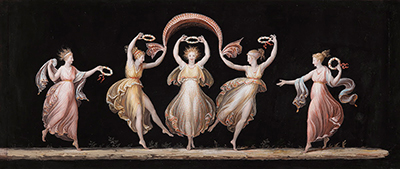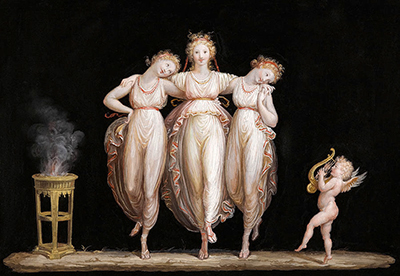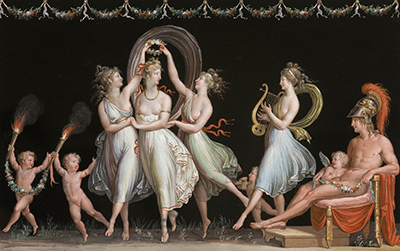Antonio Canova was a highly skilled painter but his work in this medium has been relatively forgotten in the years that have passed since his career took hold. Much of this is down to the extraordinary quality of his sculptures, for which he remains most fondly remembered.
It is believed to have been 1783 when Canova first started to take painting seriously within his own oeuvre. The self portrait that you find displayed in this section was completed in 1792, just as he felt truly comfortable with his abilities and understanding of this complex medium. In total, he produced around one hundred paintings in all, such was the busy nature of his character and also his willingness to spend long hours in his purpose built studio. He also employed a number of assistants who would remove some of the more menial tasks related to his sculptures from his own work load, and enable him to spend more time on the elements that showed off his artistic prowess. This was an entirely normal scenario for this period, as well as earlier in the Renaissance. The artist would also shy away from much of a personal life in order to devote as much time as he could to his career.
The subjects that he chose for his paintings were similar to his sculptured work, though he also produced a number of self portraits, including the one displayed here. He also took on mythological subjects as well as depictions of various items that he had come across during his travels, such as in Herculaneum and Pompeii. Around the end of the 18th century he produced a series of delicate depictions of female dancers, in a variety of poses. They were beautifully constructed and made pleasant paintings, but no-one could quite see the magic of his sculptures within these painted scenes. Many were actually more impressed by his drawings, which underlined his skills in portraiture and also allowed the artist to demonstrate the raw technical knowledge of which he was blessed.
It is argued that Canova saw his paintings as more of an expression of creativity than a genuine attempt to become considered a painter in his own right. He used this medium as a way of exploring new ideas in figurative art, just as he had done with his sketches. He also enjoyed the challenges brought about by this alternative set of materials, but did not consider his output good enough to exhibit. He kept most of these works to himself in his studio and would always feel a pull to return to his bread-and-butter, namely his marble sculptures. That said, there was certainly merit in these paintings and he did gain a certain level of success over the two decades in which he was most interested in this art form. They also underline his flexibility as an artist, though he clearly saw himself purely as a sculptor, and other pieces were carefully kept away from prying eyes.
Towards the end of his extended time working with painting, in 1798, he left Rome after it had been taken over by French forces. He returned to his hometown of Possagno and embarked on a two year spell of consistent painting, partly forced by his lack of sculpture resources. He worked with tempera rather than oils, which was in line with the more traditional styles of European painters, including most members of the Italian Renaissance. Whilst he enjoyed this period of his life, he was relieved when able to return to Rome and recontinue his sculptural creations which was always where he felt the most comfortable.









